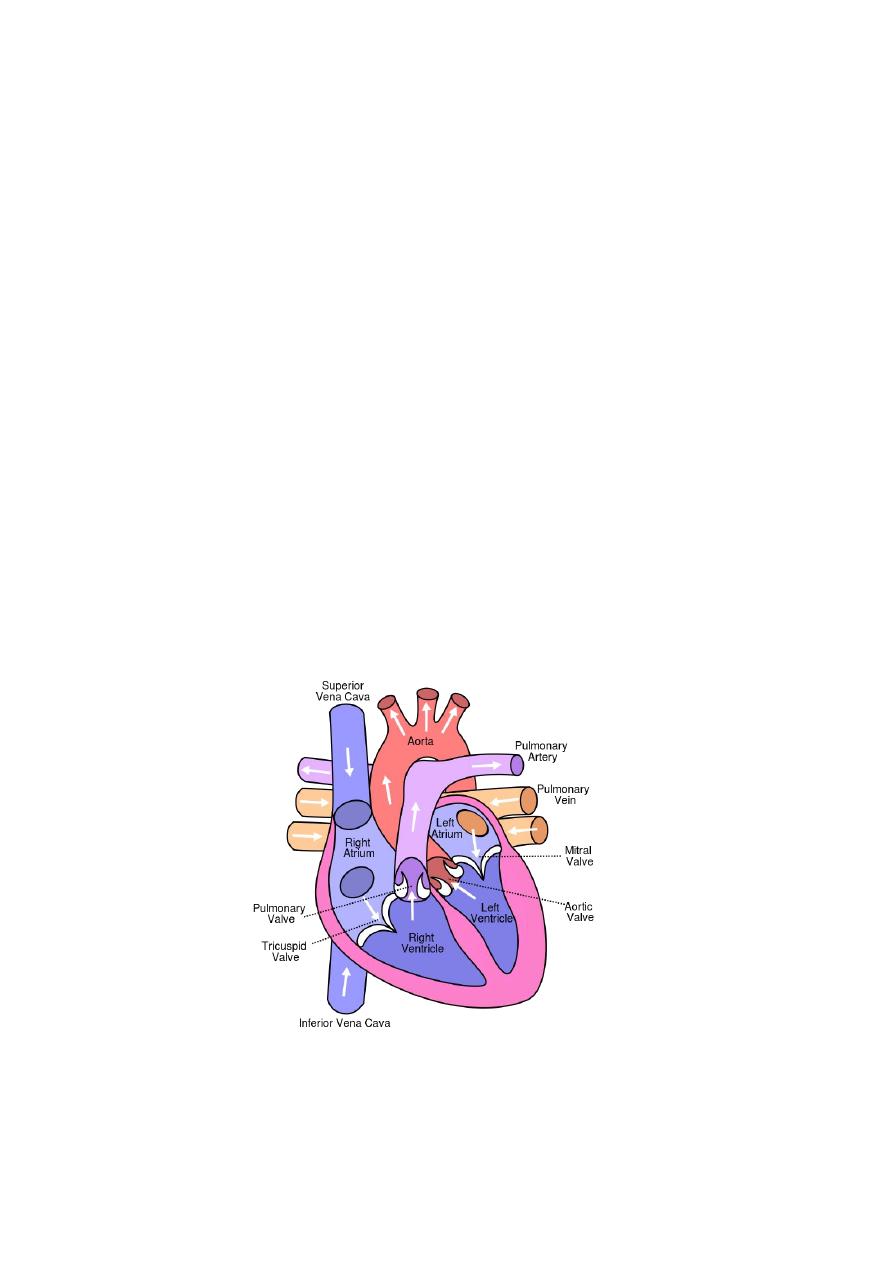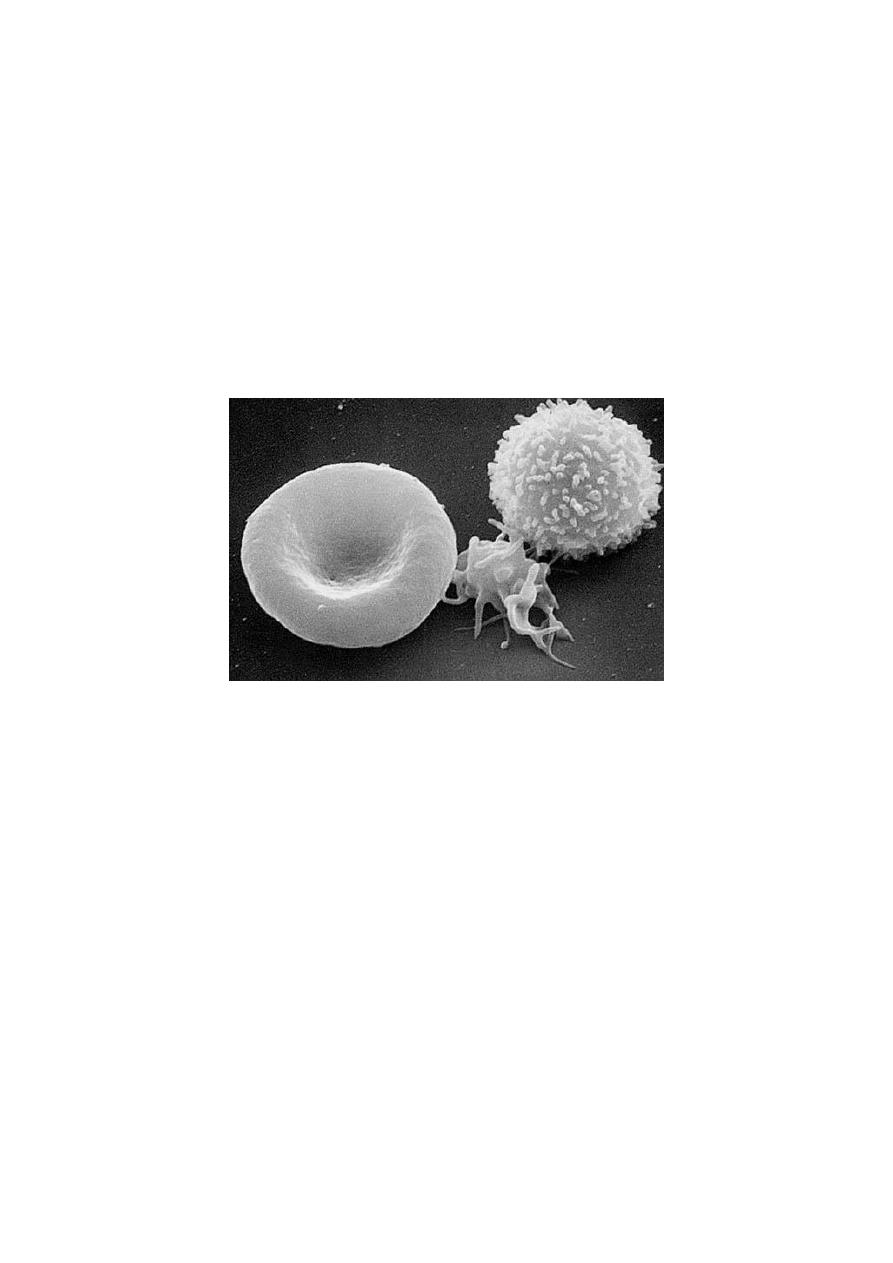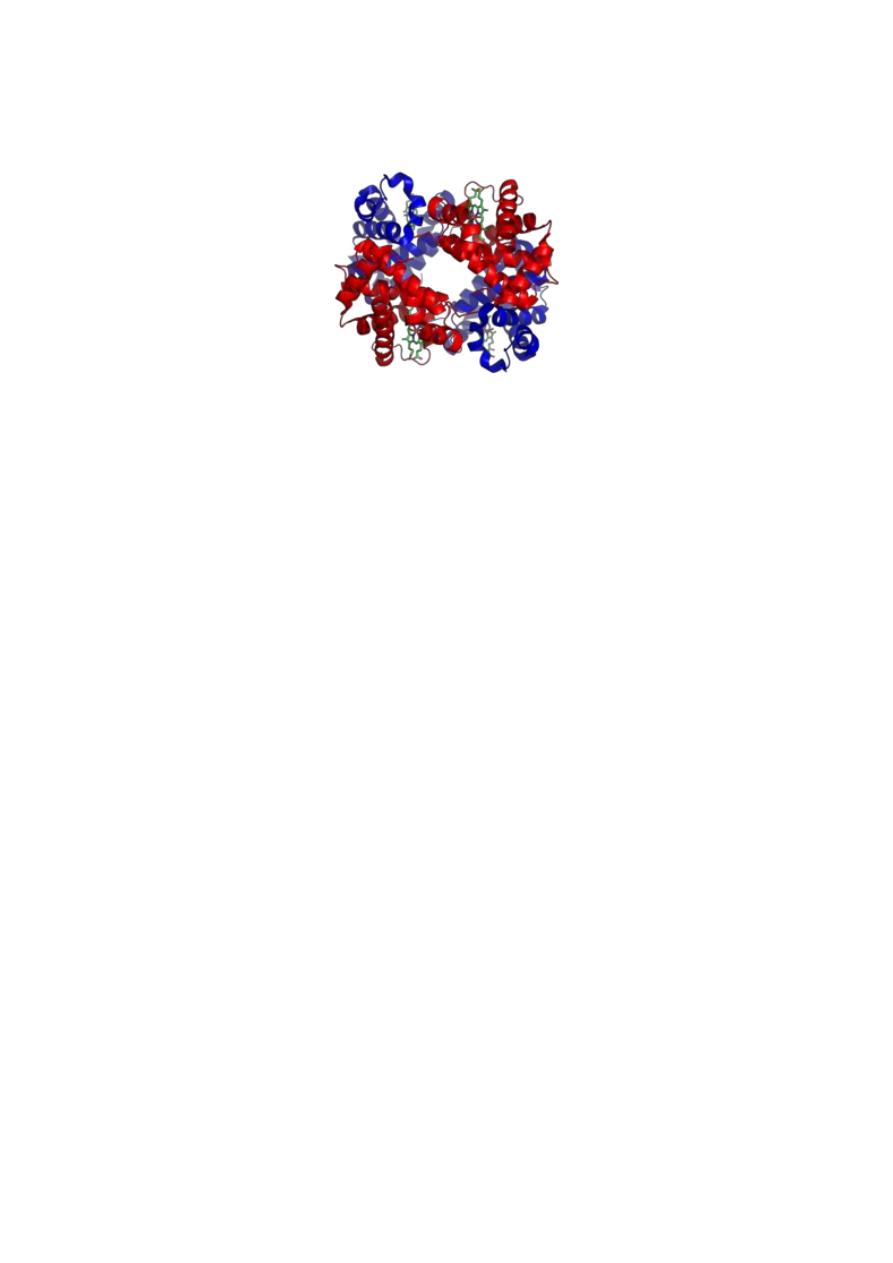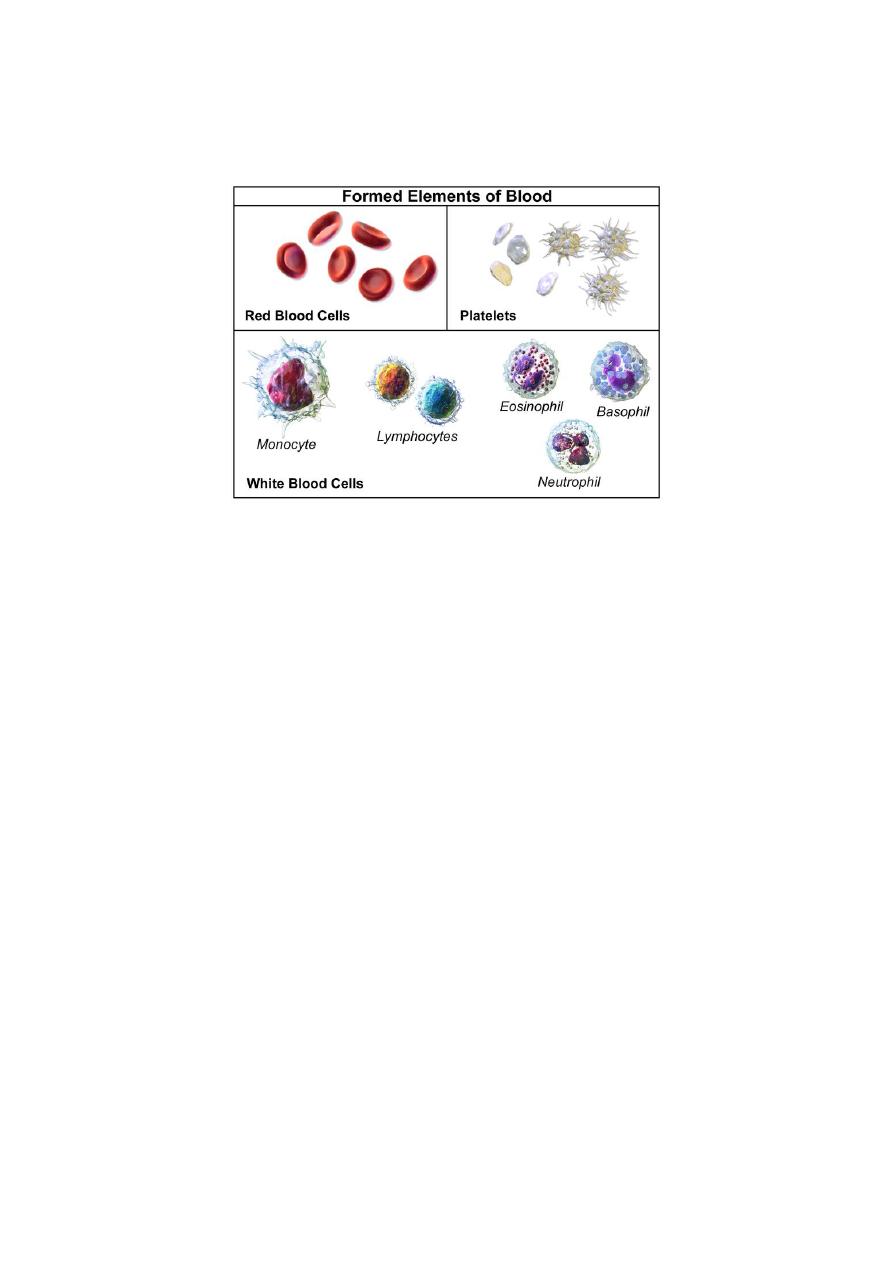
L4
th
(29
th
October-2
nd
November 2017)
Blood (Hematology)
Medical terms related to blood often begin with hemo- or hemato from the Greek
word (haima) for "blood". In terms of anatomy and histology, blood is considered a
specialized form of connective tissue, given its origin in the bones and the presence of
potential molecular fibers in the form of fibrinogen. It originates from the
hematopoetic stem cells which in turn originates from the mesodermal layer of the
embryo.
Blood accounts for 7% of the human body weight. In human, the average adult has a
blood volume of roughly 5 liters (1.3 gal), which is composed of plasma and several
kinds of cells. These blood cells (which are also called corpuscles or "formed
elements") consist of erythrocytes (red blood cells, RBCs), leukocytes (white blood
cells), and thrombocytes (platelets). By volume, the red blood cells constitute about
45% of whole blood, the plasma about 54.3%, and cells about 0.7%. Blood amount
does vary among other animals.
It is a bodily fluid in animals and human that delivers necessary substances i.e.
nutrients and oxygen to the cells and transports metabolic waste products away from
those same cells. When it reaches the lungs, gas exchange occurs as carbon dioxide
(CO
2
) is diffused out of the blood into the alveoli and oxygen (O
2
) is diffused into the
blood. This oxygenated blood is pumped to the left hand side of the heart in the
pulmonary vein and enters the left atrium. From here it passes through the bicuspid
valve, through the ventricle and taken all around the body by the dorsal aorta. Blood
contains antibodies, nutrients, oxygen and lots more to help the body work.
white
(Fig.1): Anatomy of heart demonstrated the four cardiac chambers.
In all vertebrates, it is composed of blood cells suspended in blood plasma. Plasma,
which constitutes 55% of blood fluid, is mostly water (92% by volume), and contains

dissipated proteins, glucose, mineral ions, hormones, carbon dioxide (plasma being
the main medium for excretory product transportation), as well as blood cells
themselves. Albumin is the main protein in plasma, and it functions to regulate the
colloidal osmotic pressure of blood. The blood cells are mainly red blood cells (RBCs
or erythrocytes) and white blood cells, including leukocytes and platelets. The most
abundant cells in vertebrate blood are red blood cells (corpuscles). These contain
hemoglobin, an iron-containing protein, which facilitates transportation of O
2
by
reversibly binding to this respiratory gas and greatly increasing its solubility in blood.
In contrast, CO
2
is almost entirely transported extra-cellularly dissolved in plasma as
bicarbonate ion. Blood is circulated around the body through blood vessels by the
pumping action of the heart. Arterial blood carries O
2
from inhaled air to the tissues of
the body, and venous blood carries CO
2
, a waste product of metabolism produced by
cells, from the tissues to the lungs to be exhaled.
(Figure-2): Scanning electron microscope (SEM) displays an RBC, a blood platelet and a
lymphocyte.
The erythrocytes (RBCs) lack a cell nucleus in mature organisms. In contrast,
a nucleated red blood cell (NRBC), also known by several other names, is a
mammalian RBC that contains a cell nucleus. The NRBCs occur in normal
development as progenitor cells in the erythropoietic lineage and in pathological
states.
Normally, nucleated RBCs are found only in the circulation of fetuses and newborn
infants
After infancy, RBCs normally only contain a nucleus during the very early
stages of the cell's life, and the nucleus is ejected as a normal part of cellular
differentiation before the cell is released into the bloodstream. Thus, if NRBCs are
seen on an adult's peripheral blood smear, it suggests that there is a very high demand
for the bone marrow to produce RBCs, and immature RBCs are being released into
circulation. Possible pathologic causes include anemia,
(
any of a group of hereditary hemolytic diseases caused by faulty hemoglobin
synthesis, widespread in Mediterranean, African, and Asian countries
)
,
disease accompanied by a rash with lesions resembling millet
seed), cancers involving bone marrow (myelomas,
lymphomas), and
in chronic hypoxemia
an abnormally low concentration of oxygen in the blood).

The patients with the worst lung function experienced more severe nocturnal
hypoxemia with exacerbations).
Vertebrate blood is bright red when its hemoglobin is oxygenated. Jawed vertebrates
have an adaptive immune system, based largely on white blood cells. White blood
cells help to resist infections and parasites. Platelets are important in the clotting of
blood. Arthropods, using hemolymph, have hemocytes as part of their immune
system.
Functions:
Blood performs many important functions within the body including:
1.
Supply of O
to tissues (bound to hemoglobin, which is carried in red cells)
2.
Supply of nutrients such as glucose, amino acids, and fatty acids (dissolved in
the blood or bound to plasma proteins e.g., blood lipids).
3.
Removal of waste such as CO
4.
Immunological functions, including circulation of white blood cells, and
detection of foreign material by antibodies
5.
Coagulation, the response to a broken blood vessel, the conversion of blood
from a liquid to a semi-solid gel to stop bleeding.
6.
Messenger functions, including the transport of hormones and the signaling of
tissue damage
7.
Regulation of body pH.
8.
Regulation of core body temperature
9.
Hydraulic functions.
Whole blood (plasma and cells) exhibits non-Newtonian
fluid dynamics; its flow
properties are adapted to flow effectively through tiny capillary blood vessels with
less resistance than plasma by itself. In addition, if all human hemoglobin were free in
the plasma rather than being contained in RBCs, the circulatory fluid would be too
viscous for the cardiovascular system to function effectively.
Blood cells:
One microliter (1.0 mL) of human blood contains:
4.7-6.1 million (male), 4.2-5.4 million (female) erythrocytes: They contain
the blood's hemoglobin and distribute O
2
. Mature RBC lack a nucleus and
organelles in mammals. The proportion of blood occupied by RBC is referred
to as the hematocrit, and is normally about 45%. The combined surface area
of all RBC of the human body would be roughly 2,000 times as great as the
body's exterior surface.
4,000-11,000 leukocytes (WBC)s are part of the body's immune system; they
destroy and remove old or aberrant cells (abnormal cells) and cellular debris
(leftover of dead cells), as well as attack infectious agents (pathogens) and
foreign substances. The cancer of leukocytes is called leukemia.
200,000-500,000 thrombocytes (platelets): Take part in blood clotting
(coagulation). Fibrin from the coagulation cascade creates a mesh over the
platelet plug.

(Fig. 3): Hemoglobin, a globular protein; green = hem groups; red & blue = protein
subunits
Narrow range of pH values
Blood pH is regulated to stay within the narrow range of 7.35 to 7.45, making it
slightly basic. Blood that has a pH below 7.35 is too acidic, whereas blood pH above
7.45 is too basic. Blood pH, partial pressure of oxygen (pO
2
), partial pressure of
carbon dioxide (pCO
2
), and HCO
are carefully regulated by a number of
homeostatic mechanisms, which exert their influence principally through the
respiratory system and the urinary system in order to control the acid-base balance
and respiration. An arterial blood gas test will measure these. Plasma also circulates
hormones transmitting their messages to various tissues. The list of normal reference
ranges for various blood electrolytes is extensive.
Plasma:
Makes about 55% of blood which is a fluid of the blood's liquid medium, which by
itself is straw-yellow in color. It is essentially an aqueous solution containing 92%
water, 8% blood plasma proteins, and trace amounts of other materials. Plasma is the
liquid component of blood, in which the RBC, WBC and platelets are suspended.
Plasma circulates dissolved nutrients, such as glucose, amino acids, and fatty acids
(dissolved in the blood or bound to plasma proteins), and removes waste products, i.e.
CO
2
,
urea, and lactic acid. Other proteins in plasma include antibodies
(immunoglobulins), which actively defend the body against viruses, bacteria, fungi,
and cancer cells, and clotting factors, which control bleeding. Other important
components include:
Blood-clotting factors (to facilitate coagulation)
Immunoglobulins (antibodies)
lipoprotein particles
Various other proteins
Various electrolytes (mainly sodium and chloride).
The term serum refers to plasma from which the clotting proteins have been removed.
Most of the proteins remaining are albumin and immunoglobulins.

Red Blood Cells (RBC):
Red blood cells (erythrocytes) make about 40% of the blood's volume. RBC contain
hemoglobin, a protein that gives blood its red color and enables it to carry oxygen
from the lungs and deliver it to all body tissues. O
2
is used by cells to produce energy
that the body needs, leaving carbon dioxide as a waste product. RBC carry CO
2
away
from the tissues and back to the lungs. When the number of RBC is too low (anemia),
blood carries less oxygen, fatigue and weakness develop. When the number of red
blood cells is too high (polycythemia), blood can become too thick, which may cause
the blood to clot more easily and increase the risk of heart attacks and strokes.
Polycythemia: is an abnormally increased concentration of hemoglobin in the blood, through
either reduction of plasma volume or increase in red cell numbers. It may be a primary
disease of unknown cause, or a secondary condition linked to respiratory or circulatory
disorder or cancer).
White Blood Cells (WBC):
White blood cells (Leukocytes) are fewer in number than RBC, with a ratio of about
1:600-700 RBC. WBCs are responsible primarily for defending the body against
infection. There are 5 main types of white blood cells.
Neutrophils: T
he most numerous type, help protect the body against infections by
killing and ingesting bacteria and fungi and by ingesting foreign debris.
Lymphocytes:
Consist of three main types: T-cells (T lymphocytes) and natural
killer cells, which both help protect against viral infections and can detect and destroy
some cancer cells, and B-cells (B lymphocytes), which develop into cells that produce
antibodies.
Monocytes: I
ngest dead or damaged cells and help defend against many infectious
organisms.
Eosinophils:
kill parasites, destroy cancer cells, and are involved in allergic
responses.
Basophils:
(participate in allergic responses): Some WBC flow smoothly through
the bloodstream, but many adhere to blood vessel walls or even penetrate the vessel
walls to enter other tissues. When WBC reaches the site of an infection they release
substances that attract more WBC. The WBC function like an army, dispersed
throughout the body but ready at a moment's notice to gather and fight off an invading
organism and they accomplish this by engulfing and digesting organisms and by
producing antibodies that attach to organisms so that they can be more easily
destroyed.The high number of cells can be an indication of a disease such as an
infection or leukemia
Platelets:
Platelets (thrombocytes) are cell-like particles that are smaller than red or
white blood cells and are fewer in number than red blood cells, with a ratio of about
1:20 RBC. Platelets help in the clotting process by gathering at a bleeding site and

clumping together to form a plug that helps seal the blood vessel. At the same time,
they release substances that help promote further clotting.
Leukocytosis can be subcategorized by the type of white blood cell that is increased in
number.
Leukocytosis
in
elevated
; leukocytosis
in which
; and leukocytosis in which
. An extreme form of leukocytosis, in
which the WBC count exceeds 100,000/µL, is
. In this form there are so
many WBCs that clumps of them block
. This leads to
Leukocytosis is very common in acutely ill patients. It occurs in response to a wide
variety of conditions, including viral, bacterial, fungal, or parasitic infection, cancer,
hemorrhage, and exposure to certain medications or chemicals including steroids. For
lung diseases i.e. pneumonia and tuberculosis, WBC count is very important for the
diagnosis of the disease, as leukocytosis is usually present.
The mechanism that causes leukocytosis can be of several forms: an increased release
of leukocytes from
storage pools, decreased margination of leukocytes
of leukocytes from the vessels into
tissues, or an increase in number of precursor cells in the marrow. Certain
medications, including
, may cause
leukocytosis.
A complete blood count (CBC), also known as full blood count (FBC), or full
blood exam(FBE), is a blood panel requested by general practitioner (doctor) or
other medical professional that gives information about the cells in a patient's blood,
such as the cell count for each cell type and the concentrations of various proteins and
minerals. A scientist or lab technician performs the requested testing and provides the
requesting medical professional with the results of the CBC.
Blood counts of various types have been used for clinical purposes since the 19th
century. Automated equipment to carry out complete blood counts was developed in
the 1950s and 1960s.

The cells that circulate in the bloodstream are generally divided into three types: (1).
WBC (leukocytes); (2). RBC (erythrocytes) and (3). PLT or platelets (thrombocytes).
Abnormally high or low counts may indicate the presence of many forms of disease,
and hence blood counts are among the most commonly performed blood tests in
medicine, as they can provide an overview of a patient's general health status. A CBC
is routinely performed during annual physical examinations in some jurisdictions (
the
official power (Judges) to make legal decisions and judgments
during certain crimes).
Interpretation:
Many disease states are heralded by changes in the blood count: leukocytosis can be a
sign of infection;
can result from drug toxicity;
generally referred to as the result of decreased production from the bone marrow, and
is a common complication of cancer chemotherapy. Certain disease states are defined
by an absolute increase or decrease in the number of a particular type of cell in the
bloodstream. For example:
Type of cell
Increase
Decrease
RBC
Erythrocytosis or polycythemia Anemia or erythroblastopenia
WBC
Granulocytopenia or agranulocyto
sis
All cell lines
–
